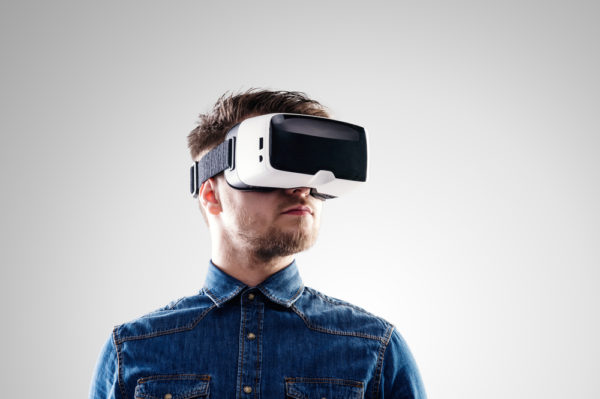
Technology has constantly altered how we communicate since the beginning of civilization. From the advent of writing, to the printing press, to the discovery of radio waves and TV broadcasting, new inventions have changed how well we can communicate and how we perceive these messages.
At the recent annual meeting of communicators from PR Boutiques International, Robert Hernandez, professor at the USC Annenberg School of Communication, spoke about how the exciting new virtual reality technology can completely change our perception, and the implications that carries for communications.
Virtual reality, or “VR”, encompasses several communications innovations. One is augmented reality, which involves the use of digital supplements or inputs built up over the real world to enhance one’s experience; for example, glasses that display a person’s name when you see their face. Beyond that is full virtual reality, which specifically means a computer simulated environment which can replicate physical presence or sensory experiences in the real world.
But the incredible aspect of virtual reality isn’t just the idea of walking into a fully-formed room from Star Wars—it’s how our brains have been shown to perceive and combine with these simulations. Even though our brains know that we are looking at a simulated image, the immersion of virtual reality is such that we still react instinctively as if it were real. Threats to a virtual limb make us flinch, and “falling” from a great height can actually frighten us. Our knowledge of the illusion is overwhelmed by the sensory realism.
As cool and futuristic as this is, the question becomes, “How can this tool impact communicators?”
As with many inventions, the applications and potential were not clearly identified when it was created. But at least one answer can be found in the value of shared experiences: empathy. The power to impact our brains so believably can help journalists and PR professionals make unprecedented emotional connections through their stories.
You may find yourself walking through a hospital showcasing the latest quality standard practices. Or perhaps you are standing next to an injured worker whose new medical device is helping them walk for the first time in six years. Virtual reality has the potential to tell a story more powerfully than ever before, and help communicators of all kinds reach further and deeper to their audiences. The future will tell what the next steps for this brave new world entail.
If you’re in healthcare, insurance, technology or other professional services industries, and need help with a PR, marketing or social media campaign, contact Scott Public Relations.
Download our e-book, “The C-Suite Asks, We Answer: The Top 6 Questions About Healthcare PR.”

Like what you’ve read? Follow Scott Public Relations on LinkedIn, Twitter, Facebook, Pinterest, and Google+.
Sign up to receive our monthly advice on healthcare, insurance and technology PR: Scott Public Relations.





Leave A Comment